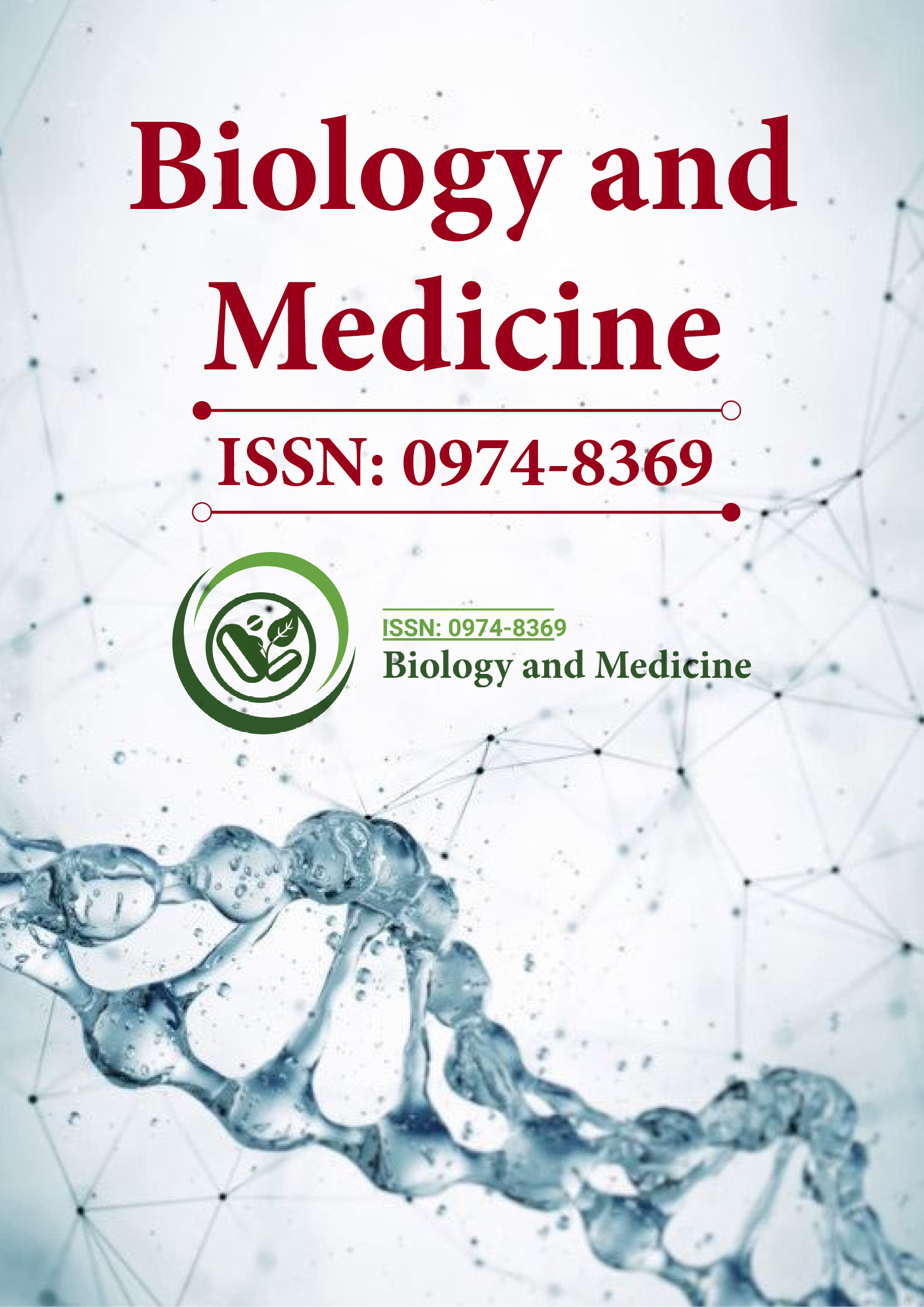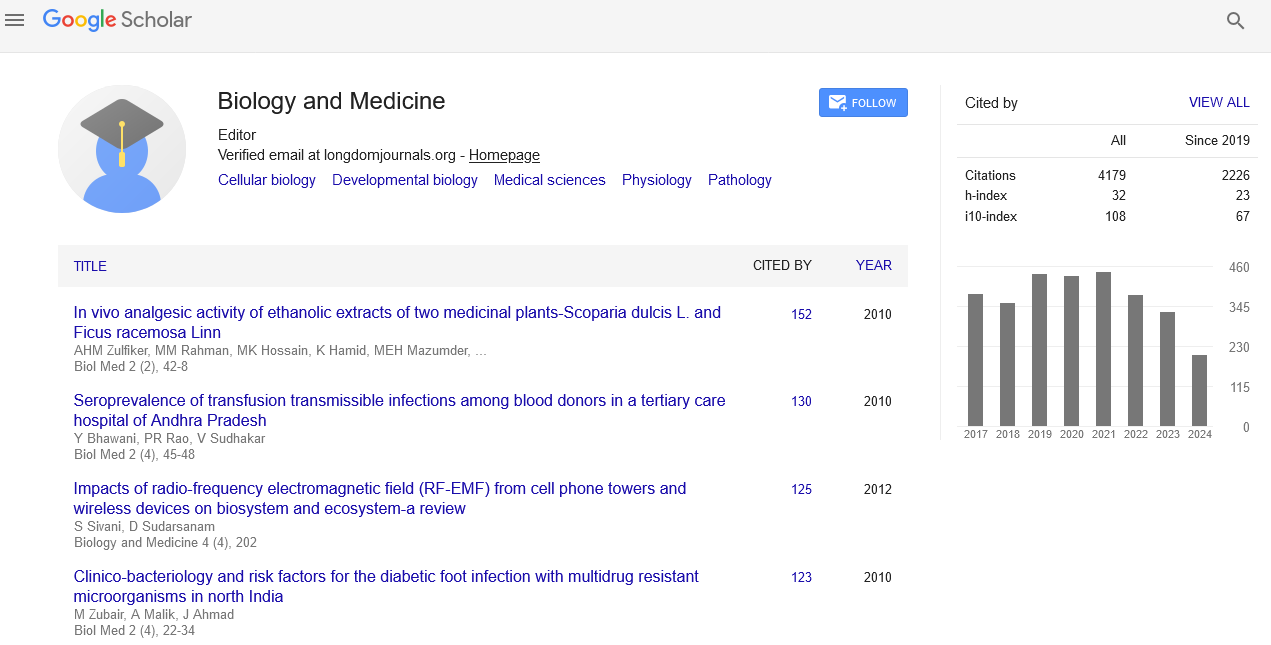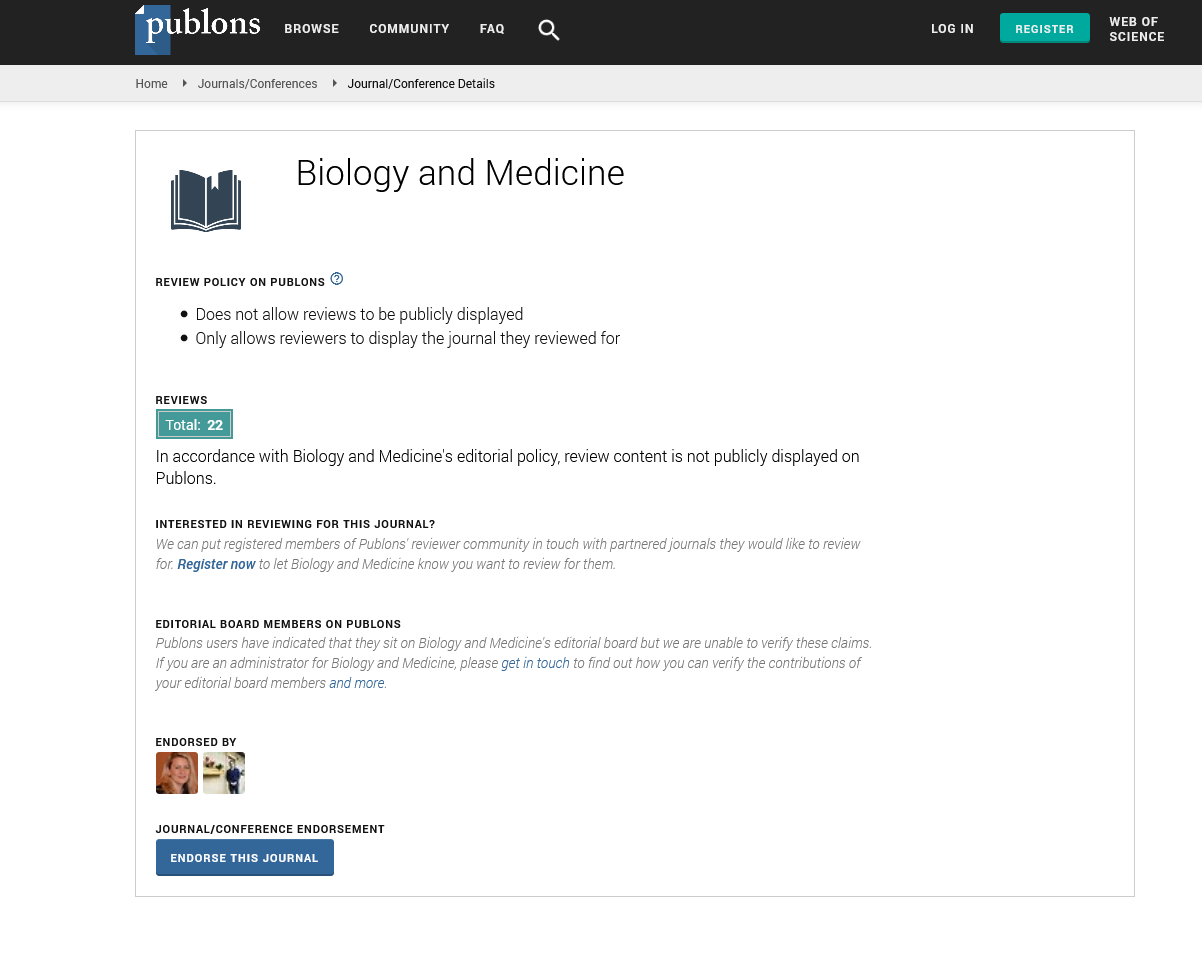Indexed In
- Open J Gate
- Genamics JournalSeek
- CiteFactor
- Cosmos IF
- Scimago
- Ulrich's Periodicals Directory
- Electronic Journals Library
- RefSeek
- Hamdard University
- EBSCO A-Z
- Directory of Abstract Indexing for Journals
- OCLC- WorldCat
- Proquest Summons
- Scholarsteer
- ROAD
- Virtual Library of Biology (vifabio)
- Publons
- Geneva Foundation for Medical Education and Research
- Google Scholar
Useful Links
Share This Page
Journal Flyer

Open Access Journals
- Agri and Aquaculture
- Biochemistry
- Bioinformatics & Systems Biology
- Business & Management
- Chemistry
- Clinical Sciences
- Engineering
- Food & Nutrition
- General Science
- Genetics & Molecular Biology
- Immunology & Microbiology
- Medical Sciences
- Neuroscience & Psychology
- Nursing & Health Care
- Pharmaceutical Sciences
Short Communication - (2025) Volume 17, Issue 3
Synthetic Biology and the Creation of Artificial Life
Viktor Belmonte*Received: 12-Feb-2025, Manuscript No. BLM-25-28806; Editor assigned: 14-Feb-2025, Pre QC No. BLM-25-28806 (PQ); Reviewed: 28-Feb-2025, QC No. BLM-25-28806; Revised: 07-Mar-2025, Manuscript No. BLM-25-28806 (R); Published: 14-Mar-2025, DOI: 10.35248/0974-8369.25.17.779
Description
Synthetic biology is a rapidly evolving interdisciplinary field that merges biology with engineering principles to design, construct, and manipulate biological systems that do not exist in nature. Unlike traditional biotechnology, which focuses on modifying existing organisms, synthetic biology aims to create new life forms or fundamentally redesign natural life to meet human needs. From the early days of genetic engineering, which allowed for the insertion of foreign genes into organisms, to more advanced techniques involving genetic circuits, cellular factories, and artificial cells, synthetic biology has opened new frontiers in the life sciences. It offers the promise of customized organisms that can address societal needs whether it be for medicine, agriculture, energy, or environmental protection.
At the heart of synthetic biology lies the creation of artificial life. By programming cells with new genetic instructions or constructing entirely new biological systems from the ground up, synthetic biologists are attempting to design life in ways that could never be imagined through natural evolutionary processes. However, the journey toward artificial life is complex and fraught with challenges, both technical and ethical. Synthetic biologists often work with genetic circuits, which are networks of genes that function together in a coordinated way. These circuits can be designed to perform specific tasks, such as sensing environmental changes, producing drugs, or carrying out chemical reactions. Just as electrical engineers design circuits to control the flow of electricity, synthetic biologists design genetic circuits to control the flow of biological information within cells.
For example, synthetic biologists have designed gene switches that turn genes on or off in response to certain stimuli, allowing cells to react to their environment in predictable ways. CRISPRCas9, a powerful gene-editing tool, has played a critical role in enabling the precise modification of genetic circuits and the construction of novel biosystems. To create artificial life forms, synthetic biologists often use chassis organisms living cells that serve as the starting point or "framework" for new synthetic systems. Common chassis organisms include Escherichia coli (E. coli) and Saccharomyces cerevisiae (baker's yeast), as these microorganisms are well understood and easy to manipulate genetically.
Chassis organisms are reprogrammed to carry out specific functions, such as producing biofuels, detecting pollutants, or synthesizing pharmaceuticals. In some cases, the goal is to create entirely new organisms that can perform tasks not found in nature, such as metabolizing waste materials into useful products or synthesizing novel compounds. One of the most ambitious goals of synthetic biology is the creation of synthetic genomes artificially constructed genomes that could be inserted into cells to create new life forms. In 2010, the first synthetic bacterial genome was created by researchers at the J. Craig Venter Institute, who synthesized the genome of the bacterium Mycoplasma mycoides from scratch and transplanted it into a recipient cell. This achievement marked a significant milestone in the field, as it demonstrated the possibility of creating life with a fully synthetic genome.
In addition, synthetic organisms could help clean up environmental pollution by breaking down toxic chemicals or absorbing carbon dioxide from the atmosphere. Researchers are exploring the use of engineered microbes to detoxify contaminated water or convert waste products into valuable resources, contributing to more sustainable and circular economies. While the potential benefits of synthetic biology are vast, the creation of artificial life raises significant ethical and safety concerns. Some of the key challenges include:
The release of synthetic organisms into the environment could pose unforeseen risks, including unintended ecological consequences or the spread of engineered genes to wild populations. Rigorous biosafety protocols and regulatory frameworks are necessary to prevent potential environmental harm. Synthetic biology could also be misused for harmful purposes, such as creating bioweapons or engineering dangerous pathogens. International efforts to regulate synthetic biology research and prevent misuse are critical for ensuring that this technology is used responsibly.
Conclusion
Synthetic biology is an exciting field that has the potential to transform industries, improve human health, and address some of the world’s most pressing challenges. The creation of artificial life, whether through synthetic genomes, engineered bacteria, or artificial cells, is one of the most groundbreaking aspects of this field. However, as with all powerful technologies, the advancement of synthetic biology must be approached with caution, ensuring that ethical, safety, and environmental concerns are adequately addressed. The ability to create artificial life raises fundamental questions about the nature of life itself. What constitutes life, and what ethical considerations should govern the creation of synthetic organisms? There are concerns about the moral status of artificially created life forms and whether they should be granted any rights or protections.
References
- Hou J, Liu Z, Gu F. Epidemiology and prevention of hepatitis B virus infection. IntJ Med Sci. 2005;2(1):50.
- Alter MJ. Prevention of spread of hepatitis C. Hepatol. 2002;36(5):93-98.
- Mavilia MG, Wu GY. Mechanisms and prevention of vertical transmission in chronic viral hepatitis. J clin transl hepatol. 2017;5(2):119.
-
[Crossref]
- Kubo A, Shlager L, Marks AR, Lakritz D, Beaumont C, Gabellini K, et al. Prevention of vertical transmission of hepatitis B: An observational study. Ann Intern Med. 2014;160(12):828-835.
- Aspinall EJ, Hawkins G, Fraser A, Hutchinson SJ, Goldberg D. Hepatitis B prevention, diagnosis, treatment and care: A review. Occup Med. 2011;61(8):531-540.
- Kwon SY, Lee CH. Epidemiology and prevention of hepatitis B virus infection. The Korean J Hepatol. 2011;17(2):87.
- Saberifiroozi M. Prevention of hepatitis A infection. Hepat Mon. 2005;5(1):19-27.
- Brook MG. Sexual transmission and prevention of the hepatitis viruses AE and G. Sexually transmitted infections. STI. 1998;74(6):395-398.
- Zuckerman JN. Hepatitis B immune globulin for prevention of hepatitis B infection. J Med Virol. 2007;79(7):919-921.
[Google Scholar] [Crossref] [PubMed]
- Shiraki K. Perinatal transmission of hepatitis B virus and its prevention. J Gastroenterol Hepatol. 2000;15:11-15.
Citation: Belmonte V (2025). Synthetic Biology and the Creation of Artificial Life. Bio Med. 17:779.
Copyright: © 2025 Belmonte V. This is an open-access article distributed under the terms of the Creative Commons Attribution License, which permits unrestricted use, distribution and reproduction in any medium, provided the original author and source are credited.


